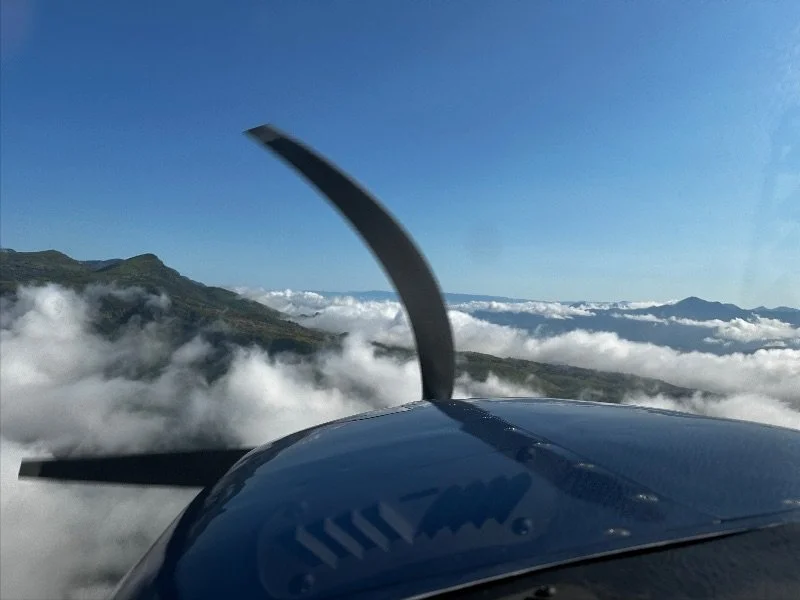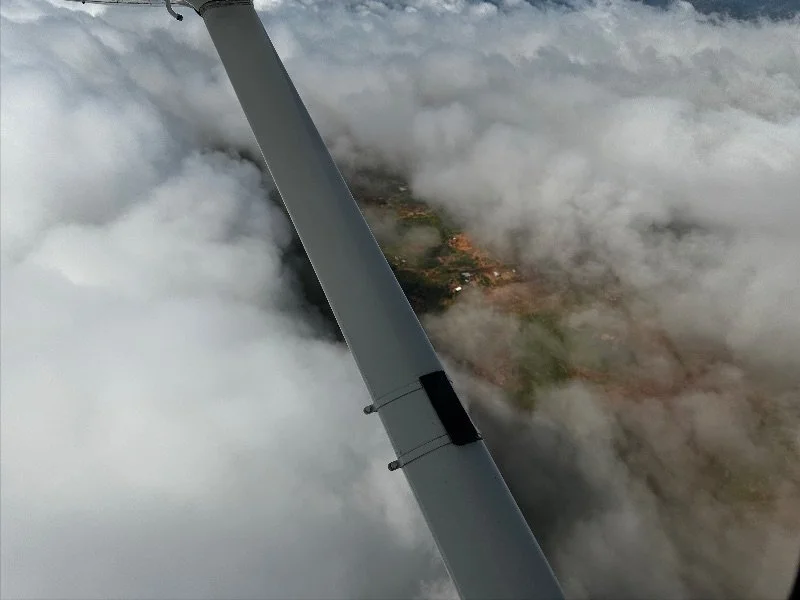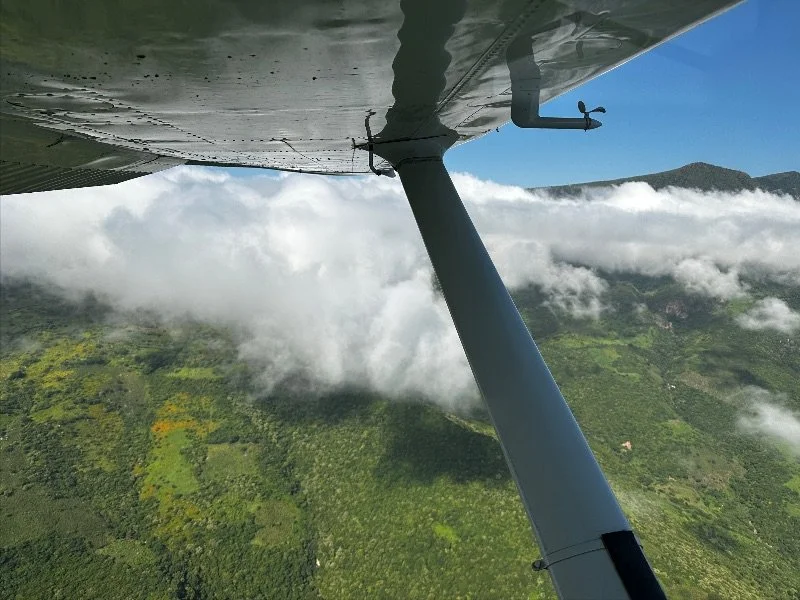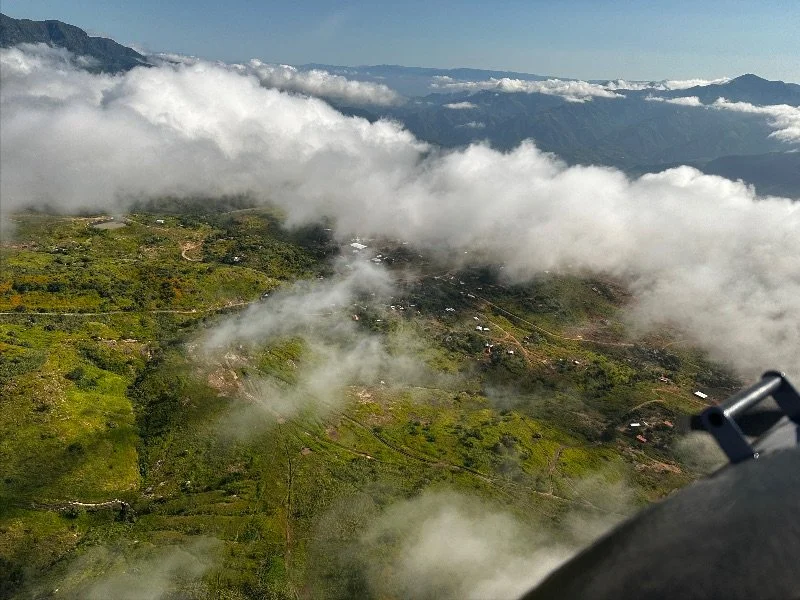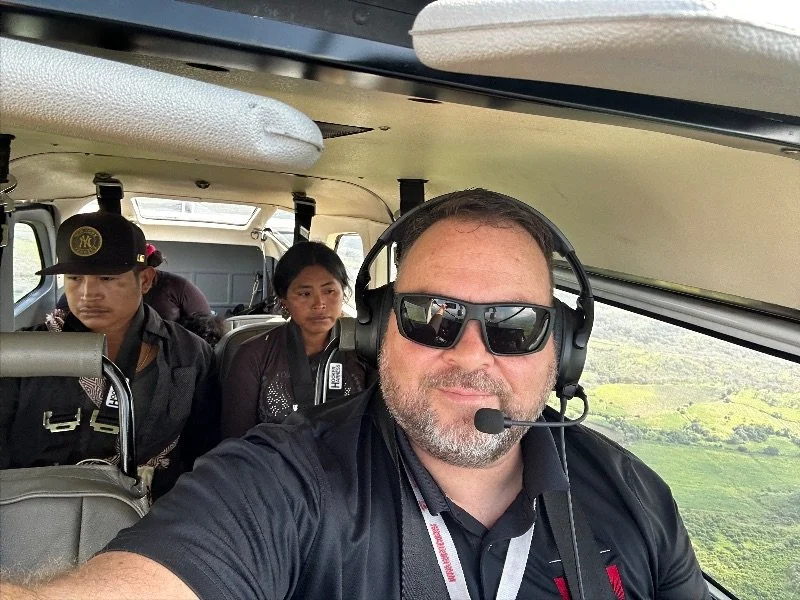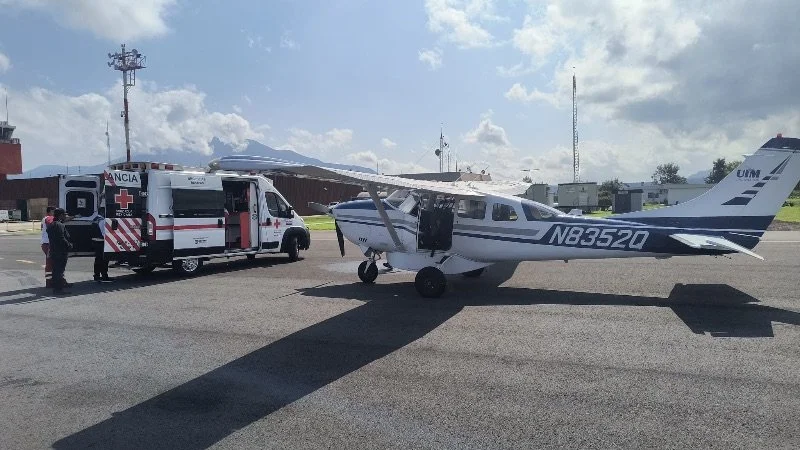Race Against the Clouds
Recently, I was called out for a medevac flight. The patient was a young woman experiencing severe medical complications and needed to get to the hospital as soon as possible. As the indigenous pastor from her village put it, “She’s just waiting around to die.”
Feeling the weight of that urgency, I headed straight for the airport.
The rainy season in central Mexico can make flying especially challenging. Navigating around clouds while staying clear of mountains definitely keeps you on your toes. I delayed my departure a bit, waiting for the weather to improve. Usually by 9 a.m., the morning fog is gone and the clouds have lifted off the mountains. At 8 a.m., I received a call from the village saying the weather was clear and I should go ahead and take off.
I jumped into the aircraft and took off quickly. An ambulance was already arranged to meet us at the airport by 8:45. If everything went according to plan, I could land back at our main base just before 9.
As I climbed into the sky, a few lingering clouds made the ride a little bumpy. After weaving around them, I finally got above the layer, and the half-hour flight out to the village went smoothly. But as I got closer, I noticed clouds rising out of the canyon, starting to swallow the village below. By the time I arrived, I could barely see the top of the airstrip — the rest of it, along with the village, was completely engulfed.
Circling overhead, my mind began to race.
First priority: Fuel. I had 38 gallons — good news. That gave me some flexibility, and I was thankful I’d added a few extra gallons before takeoff.
Second: Could I see an opening to land? No — the airstrip was completely closed in.
Third: Save fuel. Normally, the plane burns about 16 gallons per hour, but by slowing down, I could cut that to 12 and buy myself more time.
Fourth: Should I divert to an alternate airstrip and wait for the weather to clear? Looking around, I wasn’t sure the nearby strips had better conditions. The clouds appeared to be moving, so I decided to circle for a few laps and hope for a break. If I left, it would only delay reaching the patient.
I kept circling. Occasionally, the clouds would part just enough to tease me with a glimpse of the airstrip below. My original estimate of 5 to 10 minutes stretched to 20 — still no clearing. I watched my fuel carefully. We always try to land with at least an hour’s reserve, so I knew I’d need at least 26 gallons remaining for the return flight and a safety margin. If I dropped below that before landing, I’d have to abandon the mission and head home — something I desperately didn’t want to do, especially knowing she was “just waiting around to die.”
As the minutes and gallons slipped away, I kept my eyes fixed on the cloud-covered village, praying for a big enough break to make an approach. Even if the clouds closed in again after landing, at least we could load the patient and be ready to take off as soon as conditions allowed.
Finally, I saw an opening. I circled around, set up for landing, and headed into the gap. One of my golden rules in flying is always leave yourself a way out. If I’m flying into a gap, I need enough room to turn around if things don’t look right. Sure enough, as I approached, I didn’t like what I saw — I had to bail out.
I circled again. Another gap opened… and again, I had to turn back. I always teach my pilots: you must positively identify the end of the runway before committing. There are plenty of “sucker holes” that look like the runway but aren’t — and by the time you realize it, it’s too late. A mistake like that could ruin your day.
I checked my fuel again — it was dropping fast. Time to switch tanks. I couldn’t stay up much longer. The good news: the clouds were starting to break up more significantly. At 31 gallons, I saw another gap forming — my fourth attempt.
This time, I could clearly see the end of the airstrip. There it is. Finally! I made a stable approach and touched down smoothly. I won’t lie — I may have let out a little cheer at that point.
I parked at the top of the strip. The patient was already waiting. We loaded her quickly, and before long, we were airborne again.
Praise the Lord, the return flight was completely uneventful. When we landed, the ambulance — which had been waiting an extra 45 minutes while I circled above — was right there. I taxied up beside it, and the patient was transferred in no time and on her way to the hospital.
As we parked the airplane back in the hangar, we thanked God for allowing us to be a part of saving a life that day.
Written by Jasson Farmer, UIMA field pilot
